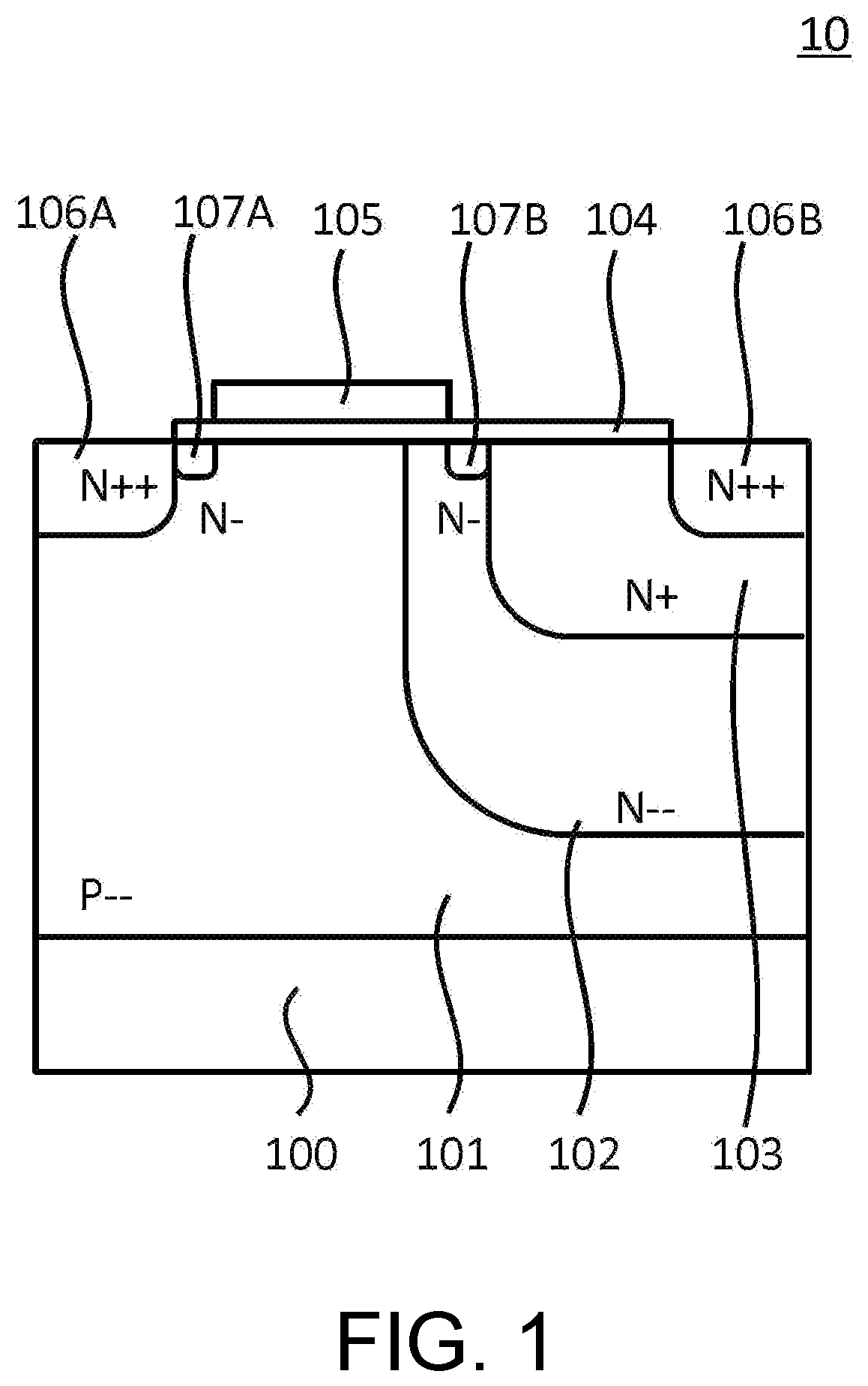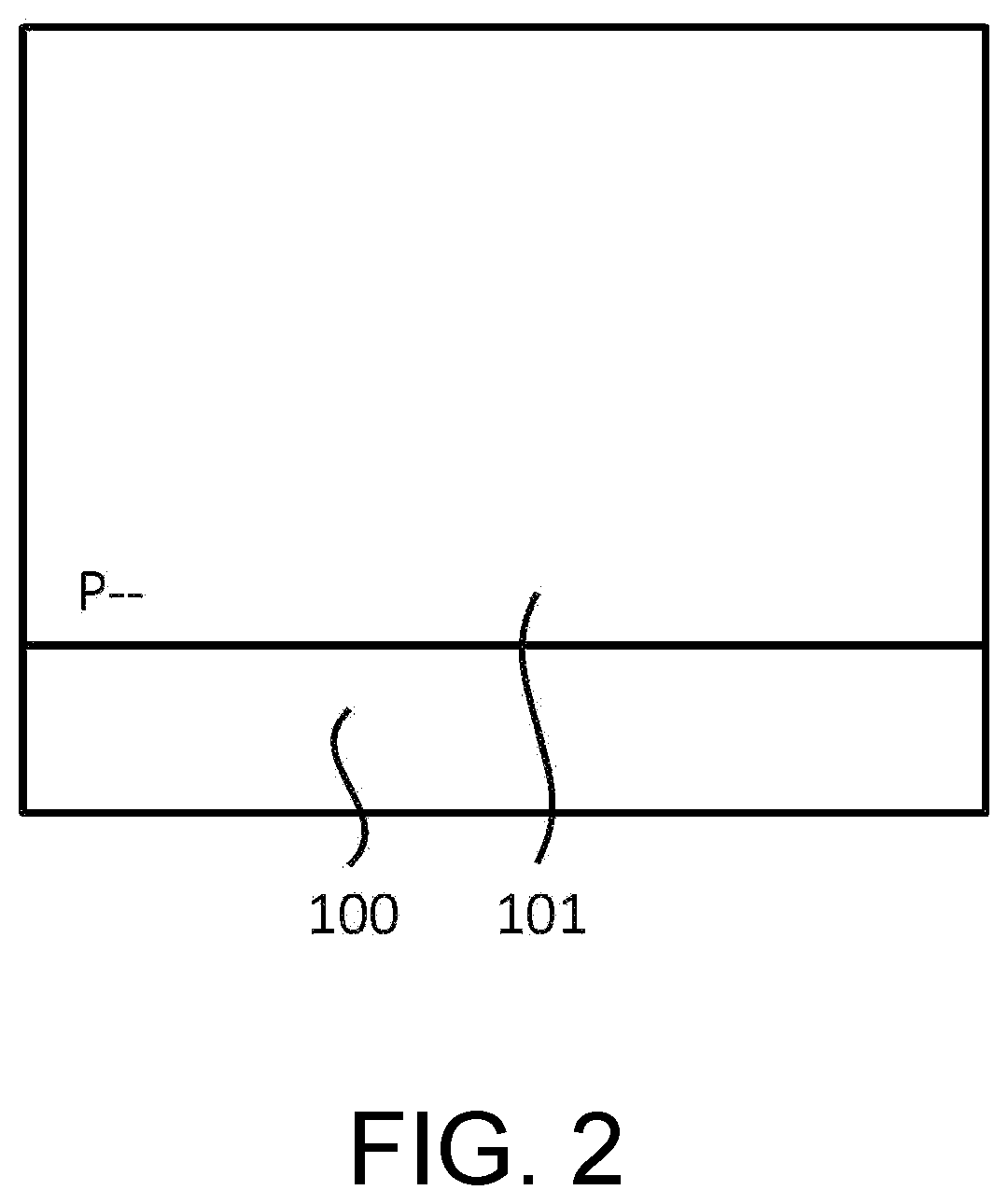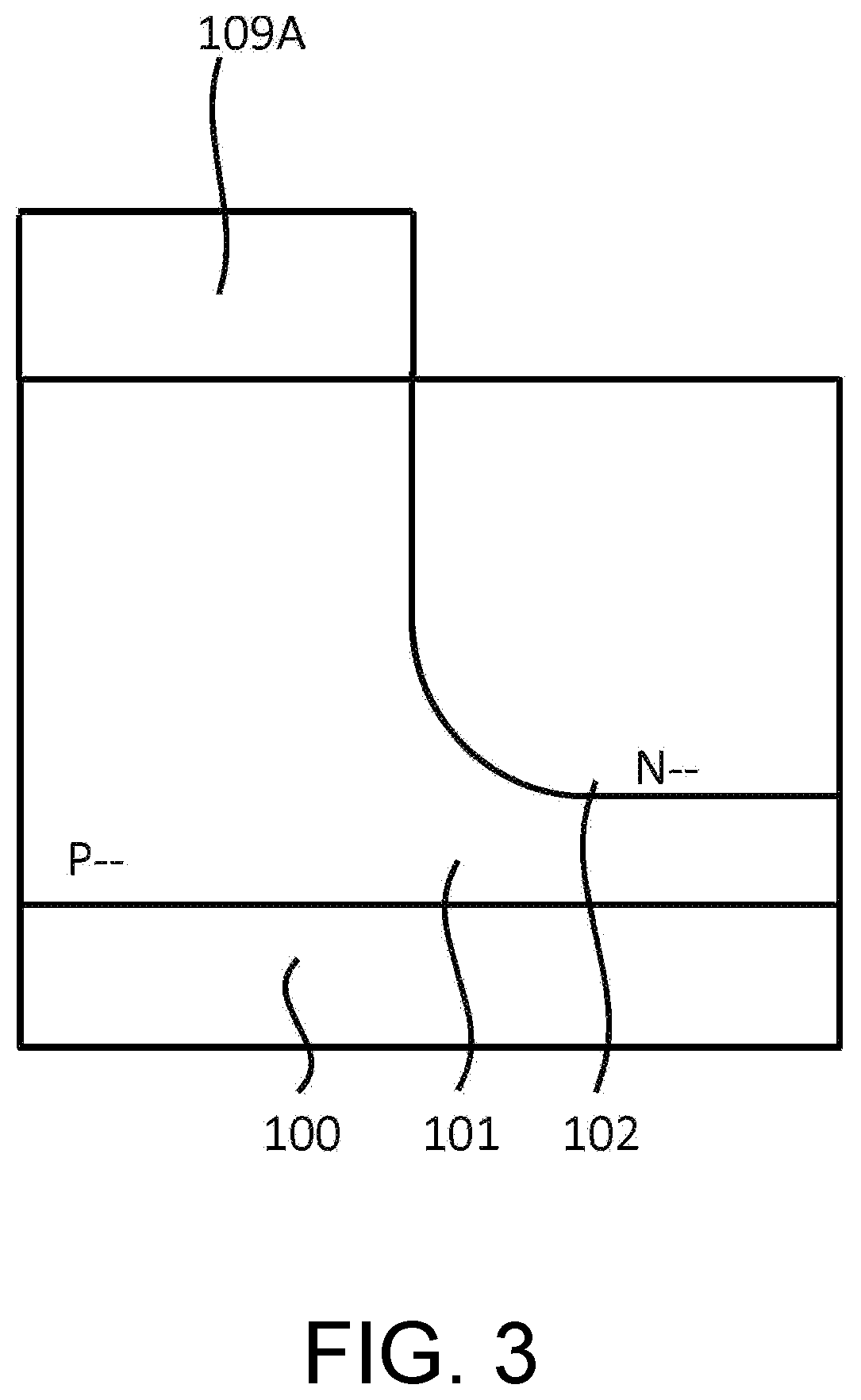Semiconductor device and semiconductor device manufacturing method
a semiconductor device and semiconductor technology, applied in the direction of semiconductor devices, electrical devices, transistors, etc., can solve the problems of thermal destruction, narrow operation range required for esd protection elements, and difficult to realize desired characteristics
- Summary
- Abstract
- Description
- Claims
- Application Information
AI Technical Summary
Benefits of technology
Problems solved by technology
Method used
Image
Examples
first embodiment
[0033]FIG. 1 is a schematic cross-sectional view illustrating an N-type MOS transistor 10 of a semiconductor device according to a first embodiment of the present invention.
[0034]The N-type MOS transistor 10 includes a semiconductor substrate 100, a second conductivity type (a P-type in the present embodiment) low-concentration diffusion layer 101 disposed inwardly from the surface of the semiconductor substrate 100, a gate electrode 105 disposed on the surface of the semiconductor substrate 100 with an interposition of a gate oxide film 104, a first conductivity type (an N-type in the present embodiment) source diffusion layer 106A disposed on a surface of the semiconductor substrate 100 which is positioned on one side of the gate electrode 105, a first conductivity-type drain diffusion layer 106B disposed on the surface of the semiconductor substrate 100 which is positioned on the other side of the gate electrode 105 to be separated from the gate electrode 105, a first conductivit...
second embodiment
[0053]FIG. 11 is a schematic cross-sectional view illustrating an N-type MOS transistor 50 of a semiconductor device according to a second embodiment of the present invention.
[0054]In the N-type MOS transistor 50, the structure of a drain and a source are the same and symmetrical to each other. That is, in the N-type MOS transistor 10 according to the first embodiment, the structures of the source and the drain are not the same and are asymmetrical to each other, but the N-type MOS transistor 50 is configured by making the structure of a source surrounding a source diffusion layer 106A the same as the structure of a drain.
[0055]Specifically, the N-type MOS transistor 50 includes a semiconductor substrate 100, a second conductivity type (a P-type in the present embodiment) low-concentration diffusion layer 101 disposed inwardly from the surface of the semiconductor substrate 100, a gate electrode 105 disposed on the surface of the semiconductor substrate 100 with an interposition of ...
third embodiment
[0057]FIG. 12 is a schematic cross-sectional view illustrating a P-type MOS transistor 60 of a semiconductor device according to a third embodiment of the present invention. In the P-type MOS transistor 60, conductivity types in all regions in the N-type MOS transistor 10 according to the first embodiment are switched to opposite conductivity types. That is, in the N-type MOS transistor 10, a P-type region is switched to an N-type region, and an N-type region is switched to a P-type region, then we can obtain the P-type MOS transistor 60.
[0058]The P-type MOS transistor 60 includes a semiconductor substrate 100, a second conductivity type (an N-type in the present embodiment) low-concentration diffusion layer 201 disposed inwardly from the surface of the semiconductor substrate 100, a gate electrode 105 disposed on the surface of the semiconductor substrate 100 with an interposition of a gate oxide film 104, a first conductivity type (a P-type in the present embodiment) source diffus...
PUM
 Login to View More
Login to View More Abstract
Description
Claims
Application Information
 Login to View More
Login to View More - R&D
- Intellectual Property
- Life Sciences
- Materials
- Tech Scout
- Unparalleled Data Quality
- Higher Quality Content
- 60% Fewer Hallucinations
Browse by: Latest US Patents, China's latest patents, Technical Efficacy Thesaurus, Application Domain, Technology Topic, Popular Technical Reports.
© 2025 PatSnap. All rights reserved.Legal|Privacy policy|Modern Slavery Act Transparency Statement|Sitemap|About US| Contact US: help@patsnap.com



